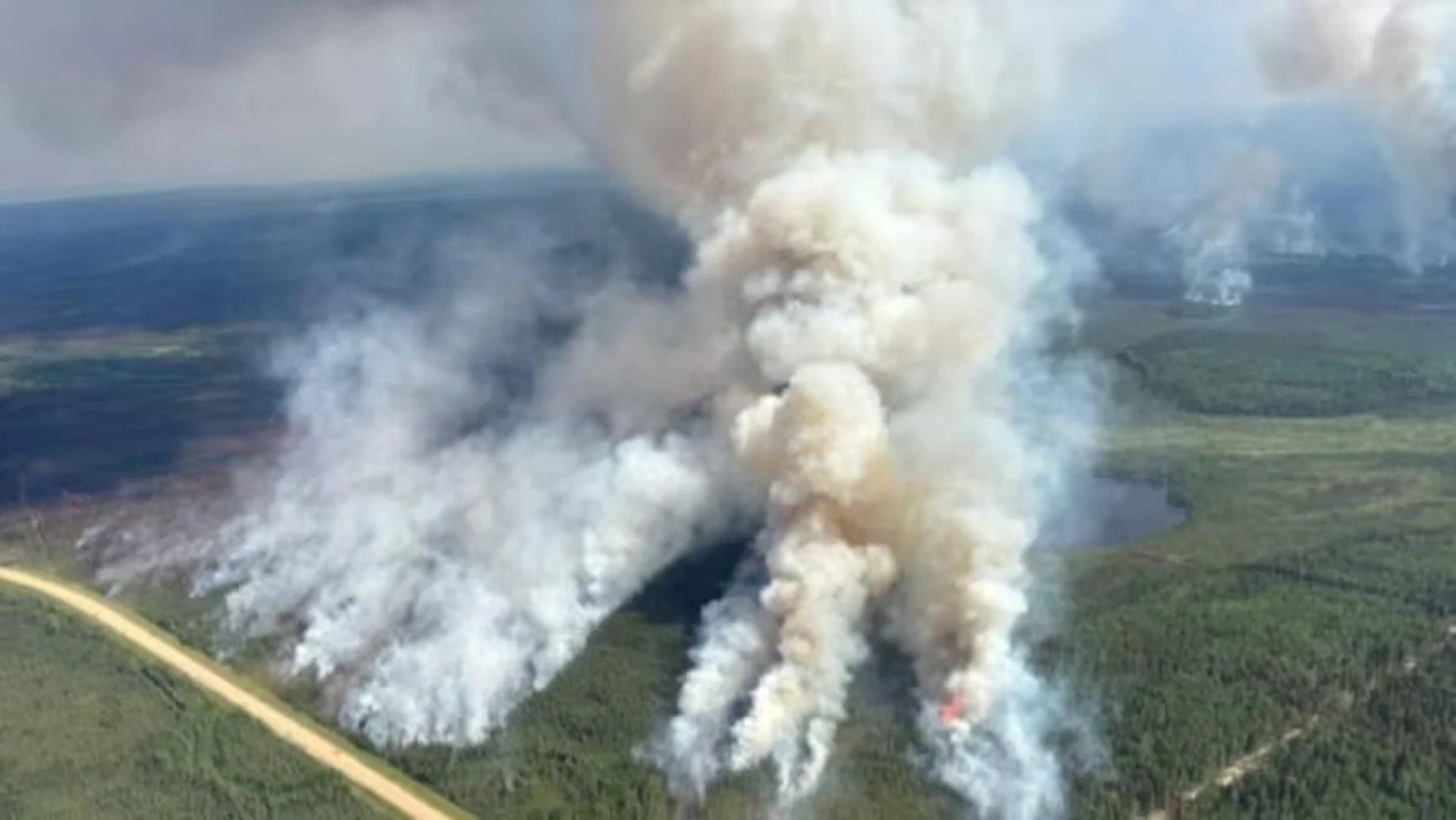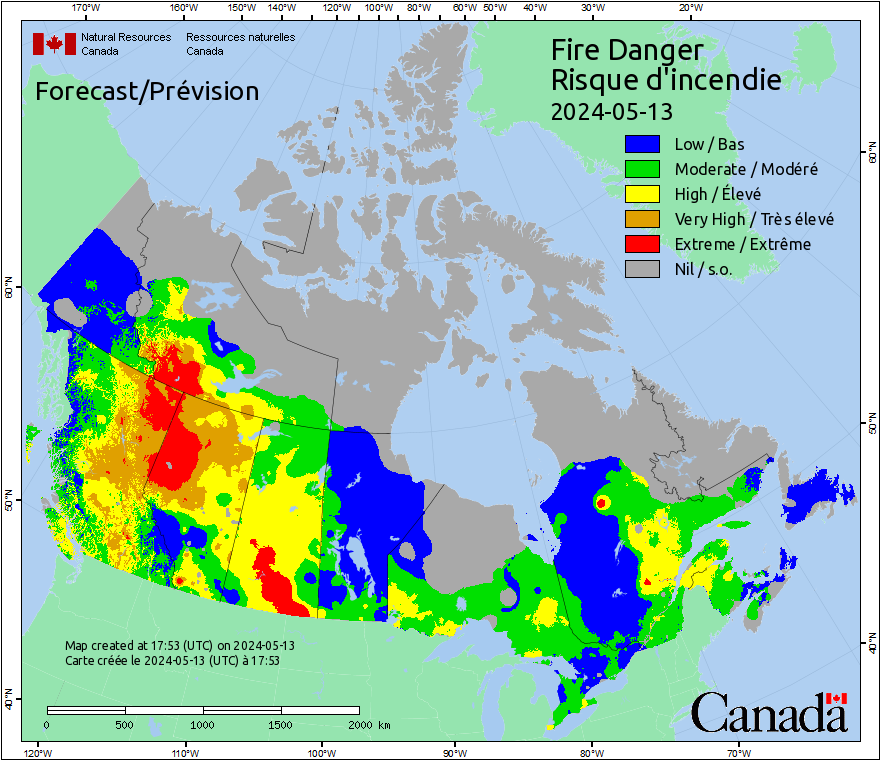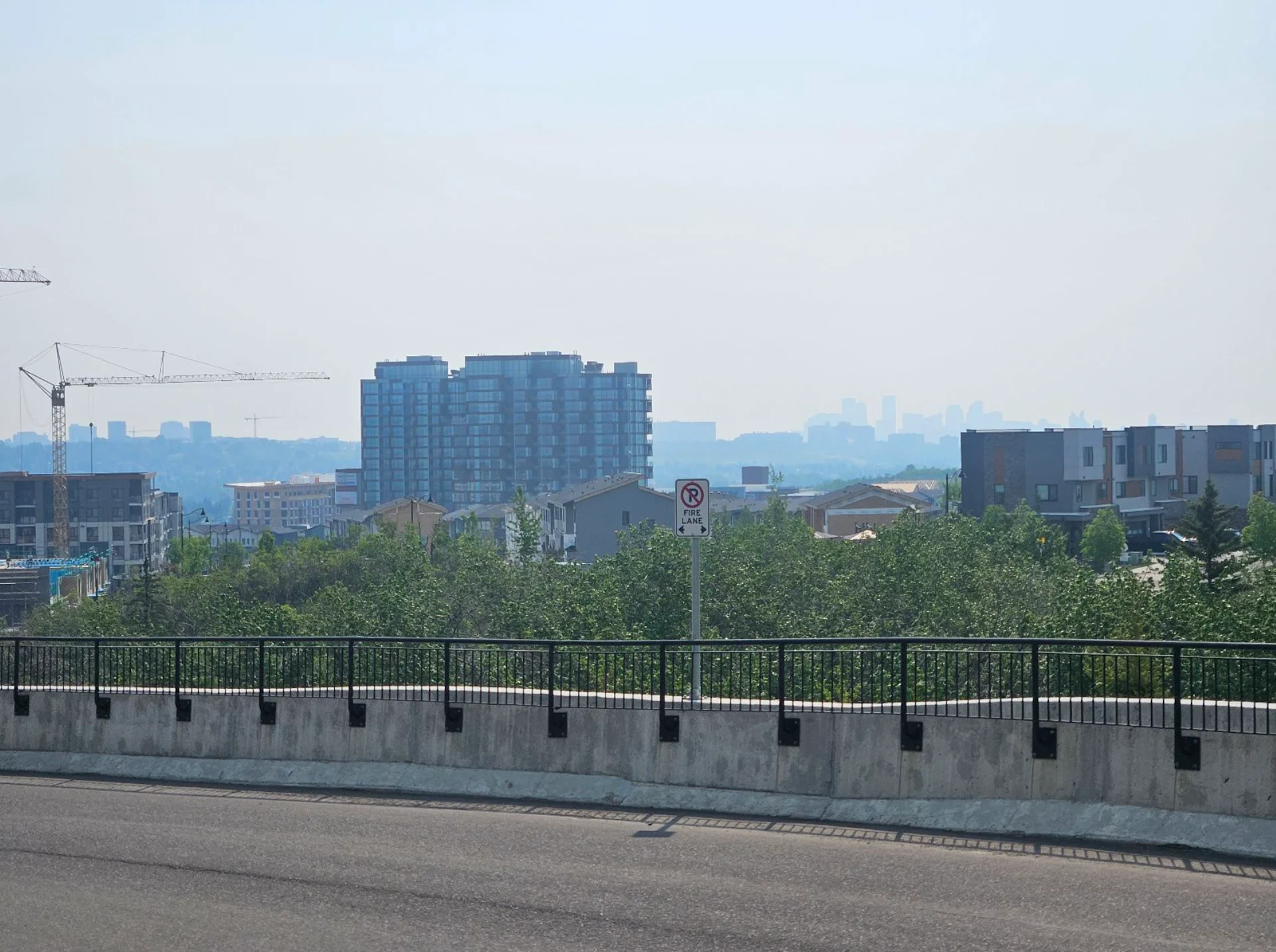
Extreme heat fuels Alberta's wildfire risk as rain in the forecast offers relief
Alberta continues to battle a relentless wildfire season, with more than 70 wildfires burning across the province, fuelled by days of extreme heat, high winds and low humidity.
Fire crews are now looking to a change in the forecast with rain expected to move into boreal regions on Thursday and Friday, promising cooler temperatures and much-needed moisture.
DON'T MISS: The Weather Network's Wildfire Hub
Derrick Forsythe, an information officer with Alberta Wildfire, said the risk remains very high in many regions with crews facing intense and unpredictable conditions.
Vast stretches of the province have been under extreme heat warnings for days with many communities from the far north to the far south facing daytime temperatures exceeding 37 C and overnight lows near 20 C, Environment Canada said.
'Susceptible to fire'
"The warmer it gets, if there's no rain or high humidity associated with it, then the fuels will start to dry out," Forsythe said.
"And as they dry out, that makes them more susceptible to fire."

He urged Albertans to exercise caution.
"That fine fuel, it's still out there, and that can ignite really, really easily and will carry fire quickly," he said.
"Depending on where you are, you've got to be really, really careful."
According to the latest provincial fire weather forecast, rain is expected to move in across the boreal regions of Alberta Thursday and Friday after days of volatile conditions.
Storms are expected to lower temperatures and douse some of the most parched areas of the province.
A band of communities across northern Alberta are expected to receive between 20 to 40 millimetres of rain in the coming days.
"We're just thankful that we're going to get some significant precipitation across that part of the province and with it, some cooler temperatures," he said.
"It's encouraging news for the next little while. There is some risk of lightning associated with that. We'll see if that sparks anything. But for now, we'll take the rain and the downtrend in temperatures."
Northwest communities flanked by flame
Forsythe said conditions in the northwest corner of the province have been the most volatile during the extreme heat and officials are closely monitoring the risk to communities.

As of Tuesday, a fire about five kilometres west of Peerless Lake in northern Alberta, had grown to more than 18,200 hectares. The blaze is among a cluster of fires burning in the region threatening communities. (Alberta Wildfire)
A group of fires known as the Red Earth East Creek complex is a priority for crews, he said.
The complex is composed of 10 wildfires centred in the northeastern portion of the Slave Lake Forest Area. The fires threatened a handful of remote communities and triggered prolonged evacuation orders.
Hundreds of people remain displaced weeks after they were ordered out of their communities.
A fire, about six kilometres east of Peerless Lake in northern Alberta, has now burned nearly 13,000 hectares and is classified as out of control. Firefighters are working to extinguish hot spots on the south side of the wildfire.
A fire is also burning to the west of Peerless Lake and is only five kilometres from the community. That fire has now covered more than 18,000 hectares.
Another fire approximately seven kilometres southeast of Red Earth Creek and about nine kilometres west of Trout Lake, has burned more than 81,300 hectares of forest and continues to burn out of control.
Firefighters have focused on dousing hot spots on the fire's northeast and northwest flanks to protect homes.
A fire that advanced on the community of Chipewyan Lake has incinerated more than 138,000 hectares and is classified as out of control.
Another blaze in the same area covers more than 1,300 hectares but is now classified as being held, and is no longer expected to grow beyond its current boundaries.

Wildfire smoke in Calgary, Alta. (Connor O'Donovan/The Weather Network)
Residents of Chipewyan Lake along with the Peerless Lake First Nation communities of Peerless Lake and Trout Lake have remained under evacuation orders since the end of May.
Residents of Red Earth Creek and Loon River First Nation have been allowed to return remain on a two-hour evacuation alert.
The risk of lighting has been high in recent days and fire lookout observers are monitoring for signs of smoke from new fires, according to the latest update on the regional fire response.
It remains unclear when it will be safe for all residents to return.
"The danger is still there," Forsythe said.
"We're continuing to work on those fires but we burned up a lot of area in June, so it's going to take a while to get those perimeters cooled and make sure everything is secured."
Since Jan. 1, there have been 677 wildfires in the Forest Protection Area, burning more than 681,000 hectares.
More than 1,600 Alberta firefighters, contract firefighters and firefighters enlisted from across the globe are currently battling wildfires across the province.
Forsythe said it's a proven to be an active season and even with rain and cooler temperatures, the risk of new fires on the landscape will remain a threat in the coming months.
"It's been a pretty active wildfire season," he said.
"And there's still potential for more fires.
"We're hoping for the best."
Thumbnail courtesy of Alberta Wildfire via CBC.
The story was originally written by Wallis Snowdon and published for CBC News.